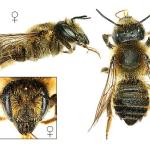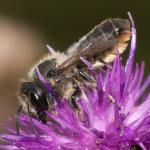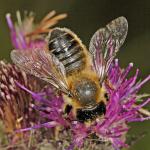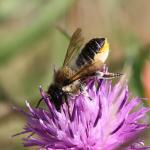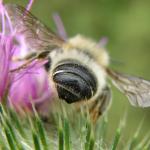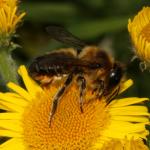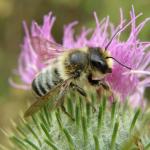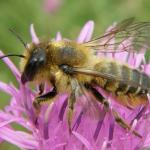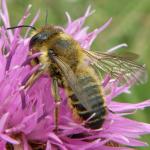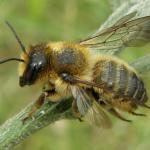Apis catula GRAVENHORST 1807; Apis nigella GRAVENHORST 1807; Megachile lignisecula COCKERELL 1924;
One of a suite of eight superficially similar species. All are medium-sized to large solitary bees nesting in holes, largely in various forms of timber either in standing deadwood or fence posts.
An uncommon species more frequently found in the south-east of mainland Britain. It has a more scattered distribution further north, seemingly reaching its extremity in north Yorkshire and two recent records from Staffordshire. There is also a cluster of records from south Wales though apparently absent from north Wales. Also recorded from Ireland but apparently absent from the Channel Islands. Occurs in western and central Europe, also in Finland and parts of European Russia.
This species is not regarded as being scarce or threatened.
Since it is a species that utilises bramble, thistles and Himalayan balsam it is likely to be found at ruderal-dominated sites. It has also been found on post-industrial sites where it was recorded feeding on Himalayan balsam and found frequently flying about standing deadwood and bramble thickets.
This is a summer-flying species with early records from mid-June to as late as early September. The majority of records however fall between early July and mid-August.
Nests are most frequently encountered in timber such as old trees and fence posts. One nest has been found in an iron tube. The nesting holes are typically of a large diameter and the cells constructed of sycamore leaves. It is surmised that other plant species are used though no evidence of this has been recorded to date.
It is known to visit thistles and bramble and has also been observed visiting Himalayan balsam (pers. obs.) though no information was obtained on whether this was for nectar or pollen.
There is no information on any parasites, though it should be assumed that M. ligniseca does have a parasite and that it is highly likely to be a Coelioxys in parallel with other Megachile species.
2012


